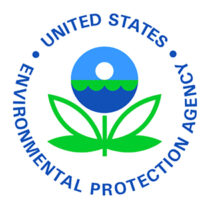the Environmental Protection Agency (EPA) announced a new review of the Ozone National Ambient Air Quality Standards (NAAQS) to ensure the standards reflect the most current, relevant science and protect people’s health from these harmful pollutants. EPA Administrator Michael Regan reached this decision after carefully considering advice provided by the independent Clean Air Scientific Advisory Committee (CASAC). In October 2021, EPA announced a reconsideration of the previous Administration’s decision to retain the NAAQS for ozone. EPA is incorporating the ongoing reconsideration into the review announced today and will consider the advice and recommendations of the CASAC in that review. The Agency will move swiftly to execute this new review of the underlying science and the standards – prioritizing transparency, scientific integrity, inclusive public engagement, and environmental justice.
“After carefully reviewing the advice of the independent scientific panel, I am convinced that a full and complete review of the ozone NAAQS is warranted to ensure a thorough and transparent assessment of the latest science,†said EPA Administrator Michael S. Regan. “From the start, I committed that EPA will uphold the integrity of independent, robust processes to ensure that air quality standards reflect the latest science in order to best protect people from pollution. As we initiate a new review, EPA will continue to work closely with our partners at the state, tribal and local levels to fully implement the existing standards, consistent with our Clean Air Act obligations.â€
Exposure to ground-level ozone can cause respiratory issues, aggravate asthma and other lung diseases, and may lead to missed days of work or school, emergency room visits, and premature deaths. These costly public health impacts can be especially harmful to children and older adults, disproportionately affecting people of color, families with low-incomes, and other vulnerable populations.
Nationally, due in part to strong EPA emission standards that reduce air pollution, ozone air quality is improving. Between 2010 and 2022, national average ozone air quality concentrations have dropped 7 percent. In many of the areas designated as not meeting the current 2015 standards, work remains. To continue progress in reducing ozone, EPA has initiated important regulatory actions including strong new federal emissions standards for cars and trucks and strengthening rules to reduce pollution from the oil and natural gas industry – a leading source of ozone forming volatile organic compounds. Taken together, the projected benefits of these and other actions addressing industrial and power sector emissions, such as with the Good Neighbor Plan, would cut emissions of ozone precursors by hundreds of thousands of tons with estimated health benefits adding up to billions of dollars.
The new review will allow EPA to consider fully the information about the latest ozone science and potential implications for the ozone NAAQS provided by the CASAC and the Ozone Review Panel. EPA will conduct the review according to well-established best practices and processes that embrace scientific integrity and the role of the public to provide input at multiple steps along the way.
Concrete, transparent and public next steps include:
- Issuing a call for information in the Federal Register in the next few days;
- convening a public science and policy workshop in spring 2024 to gather input from the scientific community and the public;
- in summer 2024, EPA will summarize the proceedings of the workshop to consider how the information gathered can be used to inform the next review, including specific areas of science that warrant particular focus and analytic enhancements;
- in fall 2024 the agency plans to release its Integrated Review Plan, Volume 2 to guide CASAC consideration and development of the Integrated Science Assessment.
EPA established the current standards at a level of 70 parts per billion in 2015 and retained them in 2020, after concluding that there was little new information to suggest the need for revision. The CASAC, however, has identified studies published more recently and also recommended that EPA conduct additional risk analyses that might support more stringent standards. EPA has determined that incorporating the ongoing reconsideration into a new review will best ensure full consideration of this new information and advice.





